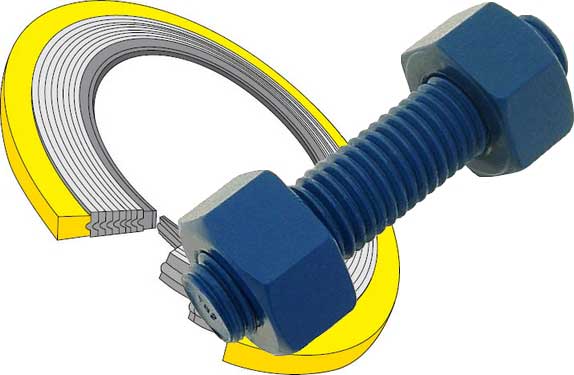Flanges Gaskets & Bolts
Gaskets
To realize a leak-free flange connection gaskets are necessary.
Gaskets are compressible sheets or rings used to make a fluid-resistant seal between two surfaces. Gaskets are built to operate under extreme temperature and pressures and are available in a wide range of metallic, semi-metallic and non-metallic materials.
The principle of sealing, for example, is the compression from a gasket between two flanges. A gaskets fills the microscopic spaces and irregularities of the flange faces and then it forms a seal that is designed to keep liquids and gases. Correct installation of damage free gaskets is a requirement for a leak-free flange connection.
On this website gaskets ASME B16.20 (Metallic and semi-metallic gaskets for Pipe flanges) and ASME B16.21 (Nonmetallic flat gaskets for pipe flanges) will be defined.
On the Gaskets page you will find more details concerning types, materials and dimensions.

Bolts
To connect two flanges with each other, also bolts are necessary.
The quantity will be given by the number of bolt holes in a flange, diameter and length of bolts is dependent of flange type and Pressure Class of flange.
The most used bolts in Petro and chemical industry for ASME B16.5 flanges are Stud Bolts. Stud Bolts are made from a threaded rod and using two nuts. The other available type is the machine bolt that using one nut. On this site only Stud Bolts will be discussed.
Dimensions, dimensional tolerances etc. have been defined in the ASME B16.5 and ASME 18.2.2 standard, materials in different ASTM standards.
On the Stud Bolts page you will find more details concerning materials and dimensions.
See also Torque Tightening and Bolt Tensioning in the main Menu “Flanges”.
Post time: Jul-06-2020
